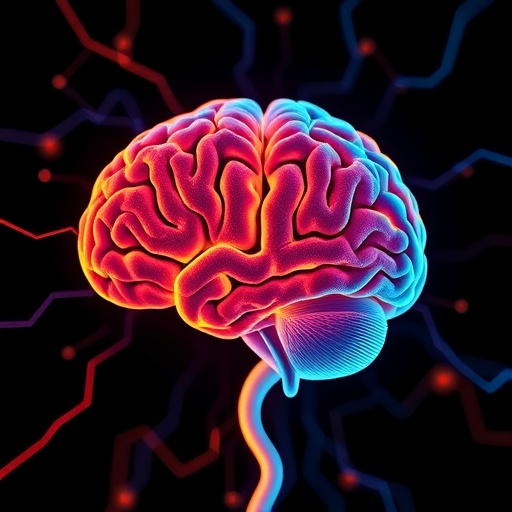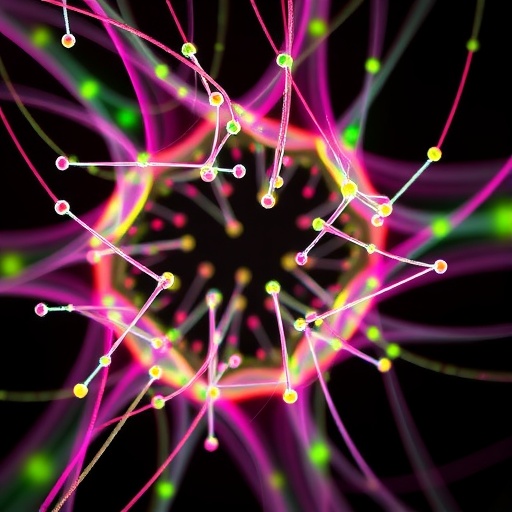In the United States, attention deficit hyperactivity disorder (ADHD) affects approximately seven million children aged three to seventeen, marking it as one of the most prevalent neurodevelopmental disorders in the pediatric population. Beyond the hallmark symptoms of inattention, hyperactivity, and impulsivity, a substantial subset of these children—estimated to be as many as half—also experience severe difficulties with impulsive aggression and persistent irritability. These emotional disturbances manifest as intense, prolonged outbursts that not only disrupt family life but also undermine academic performance and peer relationships. Despite widespread use of central nervous system stimulants as frontline pharmacological treatment, the response to ADHD medications among children exhibiting high aggression and irritability remains unpredictably variable.
A groundbreaking study funded by a recent $3.6 million grant from the National Institute of Mental Health seeks to uncover the neural mechanisms that differentiate responders to medication from non-responders within this clinically challenging subgroup of children with ADHD. Spearheaded by James Waxmonsky, a seasoned researcher with over three decades of experience in child psychiatry at Penn State College of Medicine, the multidisciplinary research team aims to move beyond conventional clinical assessments, instead using neurobiological markers related to reward processing and frustration tolerance to enhance prediction accuracy. This initiative represents a critical step toward precision medicine in pediatric psychiatry, where therapeutic decisions can be tailored based on objective brain-based metrics rather than trial-and-error methodologies.
The study will enroll children aged seven to twelve years who not only have a formal diagnosis of ADHD but also regularly experience severe episodes of anger outbursts. Using a crossover design, participants will undergo rigorous testing to identify their optimal dose of ADHD medication over a six-week period, followed by assessment phases in both medicated and placebo states. During these phases, children will engage with computer-based experimental paradigms designed to evoke reward-based learning and frustration, while state-of-the-art neuroimaging techniques and behavioral analytics capture their brain’s dynamic responses. The contrast in neural activation patterns between medicated and placebo conditions is hypothesized to illuminate the neurophysiological substrates underlying improvements or lack thereof in aggression and irritability.
One of the core challenges addressed by this research concerns the notable heterogeneity in medication response. While over half of children treated with standard ADHD stimulants exhibit reductions in aggressive behavior, a significant minority either show no improvement or paradoxically experience exacerbations in anger regulation. This variability complicates clinical management strategies, frequently leading providers and families to prematurely discontinue stimulant therapy out of concerns for ineffectiveness or side effects. Such treatment decisions often funnel children toward alternative interventions, such as off-label antipsychotic prescriptions or inpatient psychiatric care, which carry substantial risks including metabolic syndrome and long-term obesity, warranting a cautious approach.
Antipsychotic medications, though sometimes effective at curbing aggression, present considerable concerns due to their side effect profiles. Unlike ADHD stimulants, antipsychotics are associated with serious health consequences that may compromise a child’s physical well-being in the long term. Waxmonsky emphasizes the need to identify reliable biomarkers that can distinguish which children will respond favorably to safer, FDA-approved stimulant medications, thereby minimizing unnecessary exposure to these high-risk alternatives. The stakes are high, as effective management of aggressive symptoms in ADHD can markedly improve a child’s quality of life, reduce emergency psychiatric interventions, and alleviate family distress.
A distinguishing feature of this study is its innovative use of ecological momentary assessments (EMAs), a method that enables parents to report their children’s behaviors in real time through smartphone surveys administered multiple times daily. This approach circumvents the limitations of traditional retrospective questionnaires, which rely heavily on memory and are prone to recall bias. By capturing moment-to-moment fluctuations in mood and behavior within the natural home environment, EMAs provide a granular, ecologically valid dataset that correlates directly with neurobiological measures obtained during lab-based testing. Such integration of data streams enhances the study’s capacity to detect meaningful treatment effects and temporal patterns related to medication dosing and wear-off phenomena.
The study’s neurocognitive paradigms focus on reward and frustration processing deficits that are increasingly recognized as central to the pathophysiology of ADHD-related aggression. Children exhibiting high irritability often show impaired ability to adapt behavior based on feedback from their environment, struggling both to anticipate rewards and to tolerate negative outcomes. ADHD stimulant medications are hypothesized to modulate these neurobehavioral pathways by enhancing dopaminergic and noradrenergic signaling, thereby improving learning from reinforcement and reducing emotional volatility. Assessing brain response during tasks that simulate winning and losing outcomes may thus offer valuable insights into individual medication responsiveness.
By combining neuroimaging data, precise behavioral metrics, and real-time ecological assessments, Waxmonsky and his colleagues aim to develop a comprehensive framework for personalized treatment prediction in ADHD with comorbid aggression. The findings from this research have the potential not only to refine clinical decision-making but also to inform future drug development tailored to the neurobiological profiles of subpopulations within the ADHD spectrum. Ultimately, the effort seeks to reduce overreliance on antipsychotics and concomitant adverse effects, promoting safer, more effective management strategies for children and their families.
The research consortium encompasses multidisciplinary expertise, including specialists in human development, biobehavioral health, psychiatry, behavioral health, public health sciences, and psychology, drawn from Penn State as well as Vanderbilt University. This collaborative effort underscores the complexity of ADHD combined with aggressive behavior, which demands an integrative approach that spans basic neuroscience, clinical psychiatry, and behavioral science. Such partnerships enhance the rigor and translational potential of the findings, ensuring that basic research discoveries can be swiftly and effectively applied in clinical contexts.
Beyond the immediate clinical implications, the study also highlights the broader significance of sustained federal funding for mental health research. In an era where budget cuts threaten the continuity of scientific innovation, efforts like this represent crucial investments in advancing our understanding of psychiatric disorders and developing precision treatments. The hope is that by producing robust evidence and novel assessment tools, this research will catalyze a paradigm shift in pediatric mental health care that benefits not only individuals with ADHD but also the healthcare system and society at large.
In conclusion, the pioneering work led by James Waxmonsky and colleagues represents an essential stride towards addressing one of the most pressing challenges in child psychiatry: predicting and optimizing treatment response for children with ADHD complicated by severe irritability and aggression. By leveraging sophisticated neurobiological assessments combined with fine-grained behavioral measures in real-world settings, this research promises to bring clarity to a historically ambiguous clinical dilemma. Its success could transform how clinicians tailor interventions, reduce unnecessary exposure to risky medications, and ultimately improve the health and wellbeing of millions of children nationwide.
Subject of Research: Predicting medication response in children with ADHD and comorbid aggression through neural and behavioral assessments.
Article Title: Unraveling ADHD’s Aggressive Edge: New Research Seeks to Predict Medication Response Through Brain and Behavioral Analysis
Web References:
Centers for Disease Control and Prevention (CDC) ADHD Data: https://www.cdc.gov/adhd/data/index.html
James Waxmonsky Profile, Penn State: https://pure.psu.edu/en/persons/james-waxmonsky
Research or Regress (Implications of federal funding cuts): https://psu.edu/researchorregress
Keywords: Attention deficit hyperactivity disorder, ADHD, Clinical psychology, Cognitive disorders, Clinical psychiatry, Children, Behavioral psychology, Aggression
Tags: behavioral challenges in childrenbrain patterns in children with ADHDemotional disturbances in ADHDfrustration tolerance and ADHDimpulsive aggression in ADHDJames Waxmonsky child psychiatry researchmedication response variability in ADHDmultidisciplinary approach to ADHD treatmentneurobiological markers in ADHDneurodevelopmental disorders in pediatricsNIH grant for ADHD researchreward processing in ADHD children





